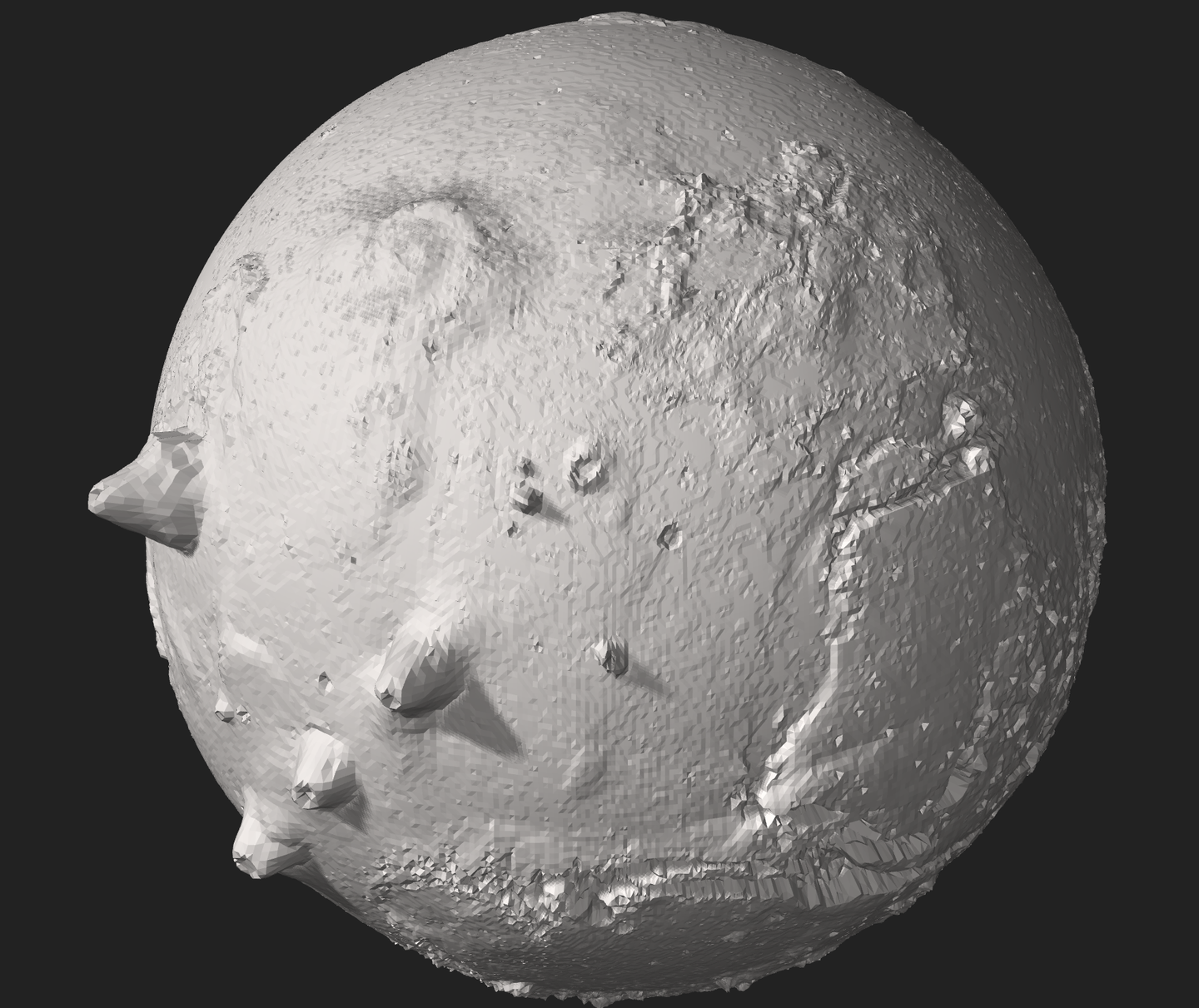Marsquakes help scientists decode the ancient Martian Dichotomy
New marsquake data reveals how mantle convection shapes Mars’ hemispheres, shedding light on its enigmatic dichotomy.

A STL 3D model of Mars with a 20× elevation exaggeration showing the Martian dichotomy. (CREDIT: CC BY-SA 4.0)
The Martian hemispheric dichotomy stands as one of the most striking geological features in the Solar System. It divides the planet into two distinct regions: the elevated, crater-rich Southern Highlands and the lower, smoother Northern Lowlands.
The sharp contrast between these hemispheres has puzzled scientists for decades, prompting investigations into its origins. The recent analysis of marsquakes detected by NASA’s InSight lander offers compelling evidence that the cause of this dichotomy may lie deep within Mars itself.
The Dichotomy: A Stark Contrast
The Southern Highlands rise 5 to 6 kilometers higher than the Northern Lowlands and feature a crust roughly 30 kilometers thicker. This disparity is not limited to topography.
The southern hemisphere is heavily cratered, with ancient surfaces dating back billions of years, while the northern hemisphere appears geologically younger, with smooth plains and fewer craters. This difference is attributed to variations in crustal thickness, magnetic properties, and evidence of past volcanic activity.
The Southern Highlands also bear traces of ancient lava flows and magnetized rocks, remnants of a time when Mars likely had a global magnetic field.
By contrast, the Northern Lowlands’ lack of magnetization and smoother terrain suggest a different evolutionary path, possibly influenced by past oceanic coverage. These findings have fueled debates about the processes that shaped Mars’ hemispheres.
Clues from Marsquakes
Marsquakes provide a window into the planet’s interior, revealing details about its seismic activity and thermal dynamics.
Unlike Earth, where data from thousands of seismometers allow precise earthquake triangulation, Mars relies on a single instrument: the seismometer aboard the InSight lander. Despite this limitation, scientists have developed techniques to analyze the seismic waves from martian tremors.
Using advanced signal processing methods, researchers identified a new cluster of marsquakes in Terra Cimmeria, located in the Southern Highlands.
Related Stories
This discovery complements earlier detections in Cerberus Fossae, a region in the Northern Lowlands known for its volcanic activity. By comparing seismic data from these two regions, scientists measured how seismic waves, specifically S-waves, lost energy as they traveled through the planet’s crust and mantle.
Temperature Differences and Convection
The attenuation of seismic waves—the rate at which they lose energy—differs significantly between the two hemispheres.
In Terra Cimmeria, the attenuation quality factor (Q) was estimated to be between 481 and 543, much lower than the 800 to 2,000 observed in Cerberus Fossae. This suggests that the southern mantle is hotter, which aligns with models of vigorous convection beneath the Southern Highlands.
Convection involves the movement of molten rock in Mars’ mantle, driven by temperature differences. These movements likely contributed to the formation of the hemispheric dichotomy.
In the southern hemisphere, hotter, rising material could have thickened the crust, while cooler, sinking material in the north may have resulted in thinning. This dynamic process, known as the endogenic hypothesis, offers a plausible explanation for the dichotomy.
Competing Hypotheses
For years, scientists have debated whether the dichotomy was caused by internal or external forces. The exogenic hypothesis posits that a massive impact or series of impacts shaped the planet’s surface. Proponents point to similarities between the Northern Lowlands and impact basins on other celestial bodies.
However, the endogenic hypothesis, supported by the latest seismic data, suggests that internal processes played a more significant role.
Early in Mars’ history, uneven heat distribution and tectonic activity could have created the initial disparities between the hemispheres. Over time, as tectonic plates ceased moving and the planet’s interior cooled, these differences became more pronounced and permanent.
The discovery of seismic activity in Terra Cimmeria and its implications for mantle dynamics mark a significant step in understanding Mars’ geological history.
The temperature differences between the hemispheres support models that propose upwelling and downwelling patterns in the mantle. These patterns could explain not only the crustal thickness variations but also the magnetic and topographic features observed today.
Furthermore, the Northern Lowlands’ potential history as a vast ocean basin adds another layer of intrigue. While evidence for past liquid water remains inconclusive, the possibility of a northern ocean underscores the importance of understanding the planet’s climatic and geological evolution.
The Path Forward
To unravel the full story of the Martian dichotomy, scientists need more data. Future missions equipped with additional seismometers could provide a clearer picture of the planet’s interior and its seismic activity. Enhanced models of mantle convection and comparisons with Earth’s geological history may also yield insights.
For now, the findings from the InSight mission represent a critical piece of the puzzle. They underscore the importance of studying planetary interiors to understand surface features and highlight Mars as a dynamic world with a complex geological past.
Note: Materials provided above by The Brighter Side of News. Content may be edited for style and length.
Like these kind of feel good stories? Get The Brighter Side of News' newsletter.
Rebecca Shavit
Science & Technology Journalist | Innovation Storyteller
Based in Los Angeles, Rebecca Shavit is a dedicated science and technology journalist who writes for The Brighter Side of News, an online publication committed to highlighting positive and transformative stories from around the world. With a passion for uncovering groundbreaking discoveries and innovations, she brings to light the scientific advancements shaping a better future. Her reporting spans a wide range of topics, from cutting-edge medical breakthroughs and artificial intelligence to green technology and space exploration. With a keen ability to translate complex concepts into engaging and accessible stories, she makes science and innovation relatable to a broad audience.



